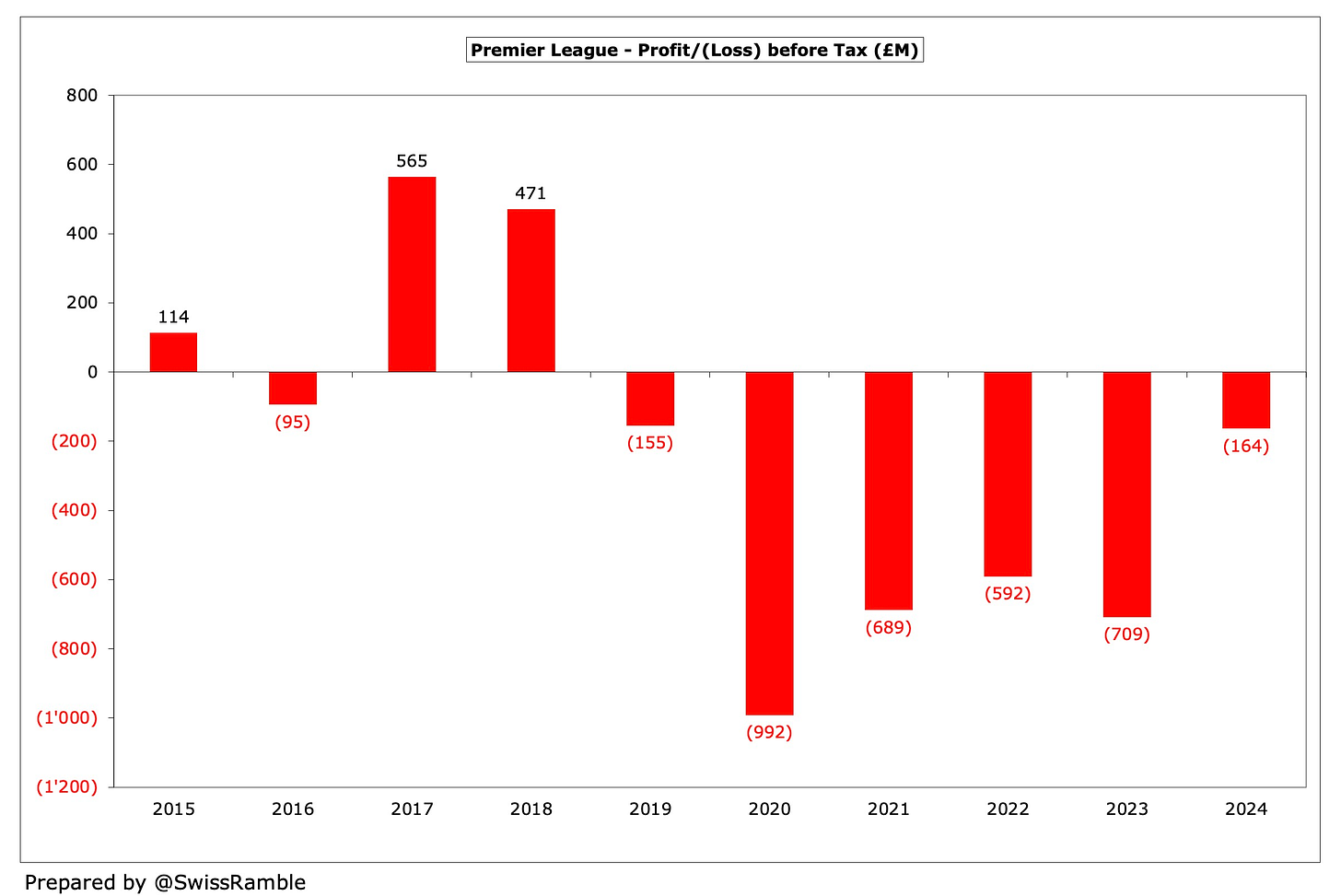While the Premier League continues to set new records for revenue, thus cementing its enormous advantage over the leagues in other countries, the question remains whether it can ever be profitable, given its large losses in recent years. This is a particularly important topic for rational investors, who would surely like to see a return on their capital at some stage.
So let’s take a look at the trends over the last 10 years to see whether these shine any light on how the Premier League finances are developing.
Right off the bat, we should say that there have been some interesting changes in 2023/24, the last season when clubs have published their accounts.
Clearly, the figures for 2019/20 and especially 2020/21, when virtually all games were played behind closed doors, were significantly impacted by the COVID pandemic, but it’s been pretty much business as usual in the last three seasons.
Profit/(Loss)
The good news is that pre-tax loss significantly reduced from £709m to £164m, which is the best result since 2018/19.
That said, the Premier League has still lost money six years in a row. Indeed, it lost a substantial £3.1 bln before tax in the last five years, which is a dramatic worsening compared to the £901m profit that was generated in the preceding 5-year period, when it managed to generate profits on three occasions.
Clearly, this was impacted by the pandemic, which led to the huge losses reported during the COVID seasons with £992m in 2019/20 and £689m in 2020/21. However, there were still large losses registered in the following two seasons, so the improvement in 2023/24 is not to be sniffed at.
Last season seven clubs generated a profit, compared to only four in 2022/23, which was another step in the right direction. In contrast, five clubs lost more than £50m, led by Manchester United £131m, Aston Villa £86m and Bournemouth £66m.
Keep reading with a 7-day free trial
Subscribe to The Swiss Ramble to keep reading this post and get 7 days of free access to the full post archives.





